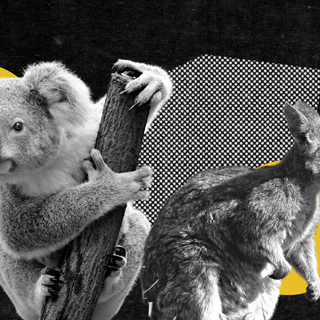There’s one truth any artist knows all too well. There’s no formula to creativity. It trickles into the consciousness in mysterious ways; the odd conversation, a stray passage, abstract thoughts snowball into brilliance. What brings about this brilliance, what people also call “hot streaks,” for artists?
That was the subject of a recent study published in Nature Communications. The researchers built on the preexisting idea that anyone remotely creative finds themselves on a roll at some point. The streak is marked randomly, determined by personal traits and fields. “Although hot streaks have been widely debated in sports, gambling, and financial markets over the past several decades, little is known about whether they apply to individual careers,” a previous exploration noted.
In the present study, the researchers looked at patterns and conditions that precede and succeed creative bursts. Researchers analyzed the careers of 2,128 artists (the likes of Frida Kahlo), 4,337 directors (including Peter Jackson), and 20,040 scientists (including several Nobel laureates) based on IMDb ratings, auctions, and research citations.
The two common trends that became the basis for evaluation were experimentation and exploration. The “hot streak” in their careers was usually preceded by a phase where they largely experimented with the work; after that creative burst, the artists focused on one singular approach.
The most evident example is Peter Jackson, the director of the epic fantasy movies Lord Of the Rings. Jackson’s work fit into two buckets: one before LOTR, where he experimented with niche movies such as sci-fi horror or the muppets film. His exploration of the LOTR universe came after these experiments. For others, too, the artists’ work was more diverse and eclectic immediately before a hot streak. Before his hot streak, scientist John Fenn worked on everything from excitation on hot surfaces to dimers. After the hot streak, Fenn focused on electrospray ionization, research that won him the chemistry Nobel in 2002.
Trying multiple things to ultimately zoom into one particular approach once creativity leads to productivity makes sense intuitively. “There’s experimentation, and then there’s an implementation based on what you have learned through experimentation,” said Dashun Wang of Northwestern University, who led the latest study. There’s also the element of “exploitation,” where individuals may drill into set patterns to devise ways of success.
What’s new about their “hot streak model” is the use of artificial intelligence to predict the presence of creative success and the tangible evidence of exploration and exploitation. “‘Trying something new,’ ‘going for it’ and optimizing ‘hot streaks,’ is not new in our understanding of creative careers. What is new is the use of AI to study careers,” Pamela Burnard, a professor of arts at the University of Cambridge, who was not involved in the study, told The Guardian.
Related on The Swaddle:
Why the Exhausting Endurance of the ‘Tortured Artist’ Syndrome Must End
Any career, particularly a creative one, carries socio-economic and individual influence. In an increasingly fragile world, where cultural dynamics change the breadth and scope of work, it is hard to predict any career trajectory with certainty. By understanding how creativity strikes, and the key conditions that make it possible, there is the possibility of “identifying and nurturing talents across a wide range of creative domains,” researchers noted.
Art is limitless, making it a fertile ground for exploration for AI. “The representation techniques used in this paper could open up promising avenues for research on creativity, offering a quantitative framework to probe the characteristics of the creative products themselves,” Wang wrote in the study.
The result, of course, was to find a method to the madness. While there will always be limits to quantifying creativity, “we can think about how do we facilitate an individual to help them breakthrough? How do we first create an environment that will help the individual to achieve their full potential?” Wang added.
Like everything abstract, the science of creativity isn’t an either/or situation. Endlessly experimenting with new approaches, or singularly focusing on one, are not linked to discovering hot streaks. It has to be one after the other.
It is as Henri Matisse said: “Creativity takes courage.” The courage of experimenting, perhaps, is where the wisdom lies.




